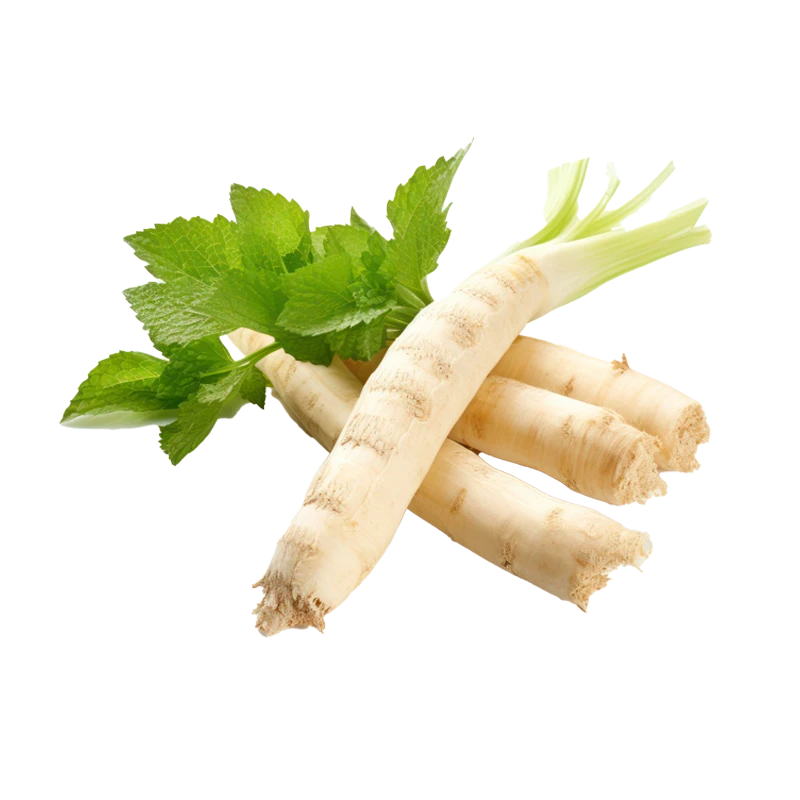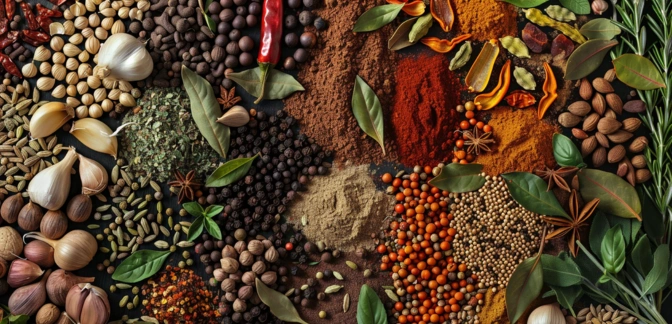Horseradish — Nutrients, Health Benefits, And Shopping Tips

Written by Listonic Team
Last update on September 4, 2024
Nutrition facts
Nutrition facts
Amount per 100 g
Calories
🔥 48 kcal
| Nutrition per: 100 g | Value | % Daily Value* |
|---|---|---|
| Carbs | 11 g | 4% |
| Fiber | 3 g | 10.71% |
| Sugars | 7 g | 14% |
| Glycemic Index | 0 | - |
| Protein | 1 g | 2% |
| Sodium | 420 mg | 18.26% |
| Total Fat | 1 g | 1.28% |
*The % of Daily Value (DV) tells you how much a nutrient in a serving of food contributes to a daily diet. 2,000 calories a day is used for general nutrition advice.
Horseradish is known for its strong pungent odor and flavor, used mainly as a condiment; it must be grated and mixed with vinegar or lemon juice.
Encyclopedia of Foods. A Guide to Healthy Nutrition
1 g
🥕 Low Fat Content
Did you know?
Health benefits
- Rich in antioxidants such as glucosinolates, which help protect the body from free radicals and reduce inflammation.
- Supports digestive health by stimulating the production of digestive enzymes and reducing symptoms of indigestion.
- Contains antimicrobial properties, which can help fight off infections.
- Low in calories, making it a flavorful addition to dishes without significantly increasing calorie intake.
Health risks
- Potential for digestive irritation causing symptoms like heartburn, stomach pain, or diarrhea, particularly when consumed in large quantities or by individuals with sensitive stomachs.
- Risk of allergic reactions in some individuals, causing symptoms like itching, swelling, or difficulty breathing.
- Potential for respiratory irritation as the strong fumes from horseradish can cause burning sensations in the nose and throat, particularly when freshly grated.
- Potential for interaction with medications particularly those that affect stomach acid or blood clotting, as horseradish can have an impact on these conditions.
How to choose horseradish
Horseradish should be firm and well-formed with a clean, pungent aroma that is strong and sharp. The exterior should be hard, with a texture that grates easily into a fine paste.
Avoid horseradish that is soft, shriveled, or has dark spots, which indicate decay. Properly fresh horseradish should add a robust, spicy kick to sauces and dishes.

How to store horseradish
Horseradish should be stored in the refrigerator. Keep it in an airtight container to maintain its pungency and freshness. Properly stored, horseradish retains its strong, spicy flavor.
Improper storage can cause horseradish to lose its potency. It’s crucial to avoid exposure to air and light. Ensuring it remains cold and sealed helps preserve its intense flavor, making it perfect for culinary use.
✅ Extra Tip
How long does it last?
Horseradish can last for 3-4 months in the refrigerator once opened. Unopened, it can last for 6-8 months when stored in a cool, dark place. Always check for any signs of spoilage before using.
What to do with leftovers?
Leftover horseradish can be used in a variety of culinary and non-culinary ways. In the kitchen, horseradish adds a sharp, pungent flavor to dishes like roast beef, seafood, sandwiches, and sauces. It can be mixed into cream or mayonnaise to create a tangy condiment, or added to mashed potatoes or deviled eggs for an extra kick.
Beyond cooking, horseradish has several traditional uses. It can be used in natural remedies for sinus congestion; inhaling the vapors from freshly grated horseradish or a horseradish-infused steam can help clear nasal passages. Horseradish also has antibacterial properties and has been used in homemade compresses to help soothe muscle aches or joint pain, although this should be done cautiously to avoid skin irritation. Additionally, horseradish can be used as a natural insect repellent in the garden; its strong scent can help deter pests when planted or when horseradish scraps are scattered around the garden bed.
👨⚕️️ Medical disclaimer
Discover products from other categories
Listonic Team
Fact-checked
Our editorial team checked this article to make sure it was accurate at the time of publishing it.
Get the top-rated shopping list app on your phone!







